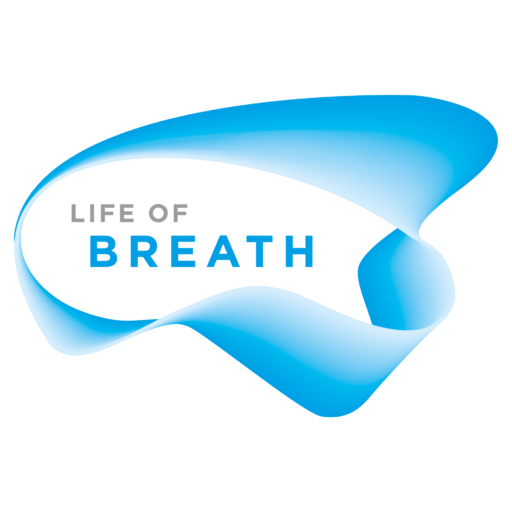Making the invisible visible (2)
Rebecca Oxley, post-doctoral research fellow on the Life of Breath project, writes about the recent project launch in Durham (see Making the invisible visible (1):
Life of Breath officially launched its programme of work in Durham this week by offering a composition of disciplinary perspectives of breathing and breathlessness, which, working collaboratively and distinctly, can bring voice and shape to the invisibility of breath. This invisibility, as Primary Investigators Prof Jane Macnaughton and Prof Havi Carel noted, can include the unseen breath, breath that is taken for granted and invisible to consciousness, or the metaphorical invisibility experienced by those with respiratory illness, including hidden symptoms, suffering, stigma, and gaps in our understanding of what it is to breathe and feel breathless.
Jane and Havi elucidated the aims and value of a multidisciplinary approach to making the invisible visible, which was cemented and elaborated by Prof Corrine Saunders and Dr. Andrew Russell who introduced literary and anthropological approaches to exploring breathing and breathlessness. Andrew also briefly outlined the five perspectives to be discussed more broadly: the clinical perspective, the artistic perspective, the archaeological perspective, the literature perspective and the patient’s perspective.
Breathe in, and hold your breath for as long as you can … listen to how your body is shouting at you to breathe.
Prof Miriam Johnson introduced the gravity of breathlessness as above, by discussing the clinical perspective and how a holistic clinical approach is important in addressing the symptoms of breathlessness, rather than simply treating the underlying condition. This is because the experience of breathlessness means more than measuring disease. She acknowledged the importance of language in describing symptoms in the clinical encounter: why, for instance, can’t you tell a GP you can’t dance?
Jayne Wilton shared the value of an artistic approach to understanding breath, explaining that it is the subtle dynamics of making the breath visible that keeps her exploring and creating. Through asking what a sigh looks like, Jayne revealed a few media through which the sigh can take form, including the visual translation of the sound of a sigh. Strikingly, she showed on film the process of how the words ‘life’, ‘of’, and ‘breath’ were breathed and given vocal form, then provided these words as physical artefacts – a form the audience could see, touch and interact with.
Prof Charlotte Roberts, providing the archaeological perspective, also detailed how breath can be materialised, this time through how the breathing in of polluted air can imprint on facial sinuses and ribs. She noted that the archaeological record can provide an exciting and important window into how breathlessness was experienced in the past, and potential causes for this.
Dr. Peter Garratt explored several examples of poetry and fiction, including John Ruskin’s (1867) The Queen of the Air and Elizabeth Gaskell’s (1855) North and South, to discuss some poignant and informative meanings of breath and breathing within their creative and historical contexts. The words that have stayed with me from this talk were those from Gertrude in Shakespeare’s Hamlet (v.ii), ‘He’s fat, and scant of breath,’ when pondering Peter’s thoughtful question ‘What does it mean to contemplate a breathless Hamlet?’
The final, moving perspective was that provided by James Edwards and Gaynor Williams from Breathe Easy Darlington, who shared their experiences living with long-term lung conditions. Both James and Gaynor shared their experiences of breathlessness in a touching, sometimes humorous and deeply informative way, ensuring that all were aware of the importance of patients’ knowledge and views in shaping healthcare services and understanding breath, breathing and breathlessness.
In between these five perspectives, brief interludes provided time for the audience to ponder and reflect on ways of breathing, and engage with examples of breath made visible through sound, speech and music. Such ‘breathing spaces’, kept everyone inspired, entertained, and aware of the rich multidimensional nature of the Life of Breath.
Prof David Fuller provided space to contemplate breath in verse, with a reading of excerpts from Charles Olson’s (1950) Projective Verse and Walt Whitman’s (1855) Song of Myself (sections 1 and 2). Alex Wade barely paused for breath with an energetic saxophone solo of ‘Ignition’ by James Rae, and Prof Douglas Davies referred to the religious ‘breath of God’, reading from Genesis (2:7, 2:4b-9) and singing an excerpt of Veni Creator Spiritus. Mary Robson created a piece that enabled the audience to breathe to and with the sounds of the stethoscope – a medium which made audible the sounds of breathing, voice, and the thoracic cavity. The beautiful chorale finale performed by the vocal ensemble Renaissance was a real treat: a selection of songs which explore a number of connections between the breath and music. Such connections can be found in Giovanni Battista Guarini’s Dolce Spirto D’Amore:
Love’s sweet spirit / Held in a sigh. / While I gaze on her fair face / It breathes life into my heart. / Thus it acquires courage / From that lovely mouth / Which, sighing, it touches.
This final ‘breathing space’ marked the official end of the launch, but gave rise to another kind of breathing space – the kind where celebratory drinks were enjoyed along with the chance to ponder, reflect and discuss all that had been made visible throughout the event, and the future of the Life of Breath.




1 Comments
Pingback: Making the Invisible Visible (Durham launch event) | Life of Breath